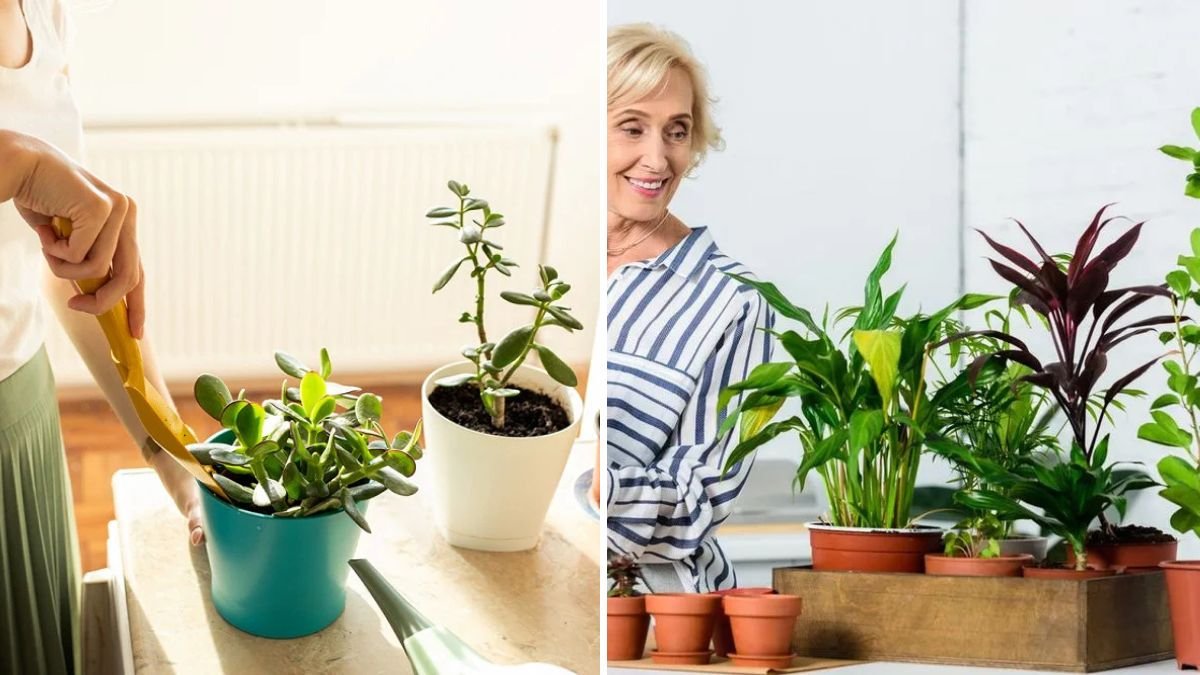For centuries, humans have associated certain plants with prosperity, protection, and good fortune. From ancient cultures to modern feng shui practices, indoor plants have not only been valued for their beauty and air-purifying qualities but also for their symbolic meanings. Choosing the right plants for your home can boost positive energy, attract abundance, and enhance well-being.
This guide explores seven indoor plants traditionally believed to bring good luck, detailing their history, care requirements, and ways to incorporate them into your home.
1. Lucky Bamboo (Dracaena sanderiana)

Symbolism and Tradition:
Lucky bamboo is a staple in feng shui practices, where it represents growth, strength, and good fortune. The number of stalks carries different meanings:
- 2 stalks: Love and luck
- 3 stalks: Happiness
- 5 stalks: Health
- 8 stalks: Wealth
Care Tips:
- Can grow in water or soil.
- Requires indirect sunlight and moderate watering.
- Ensure water levels are maintained if grown hydroponically.
Placement Tips:
- Place in the east or southeast corner of your home for wealth and prosperity.
- Avoid placing in bathrooms or kitchens where energy may be weakened.
Lucky bamboo’s elegant appearance and symbolic meaning make it a popular gift and home decoration.
2. Money Tree (Pachira aquatica)
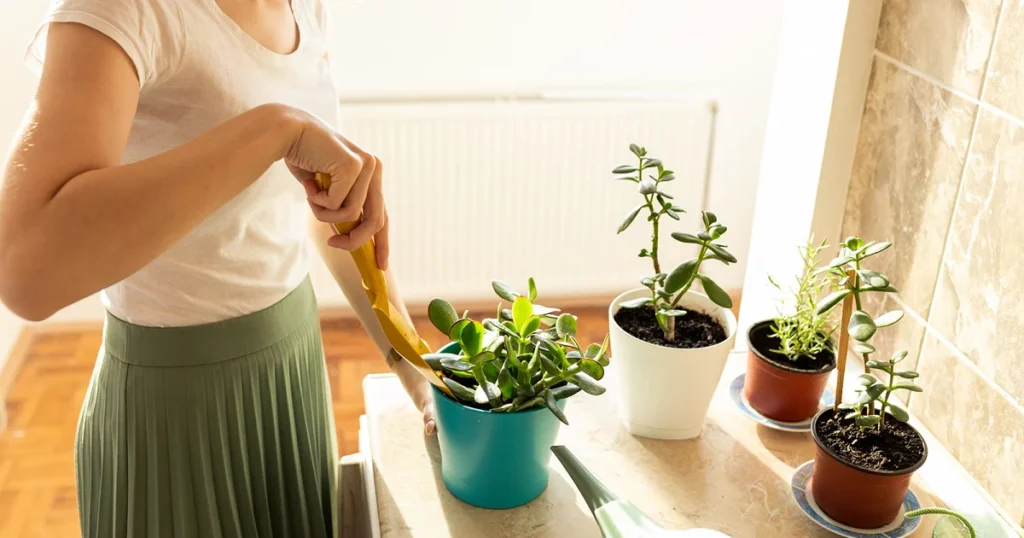
Symbolism and Tradition:
The money tree is a traditional symbol of wealth and financial success, particularly in East Asian cultures. Braided trunks are believed to “trap fortune”, while lush green leaves signify growth and vitality.
Care Tips:
- Prefers bright, indirect light.
- Water moderately, allowing soil to dry slightly between waterings.
- Avoid direct sunlight, which can scorch leaves.
Placement Tips:
- Position in the southeast corner of a room or office to attract wealth.
- Keep it near the entrance to encourage positive energy flow.
A money tree is more than a decorative plant; it is considered a talisman for financial stability.
3. Jade Plant (Crassula ovata)
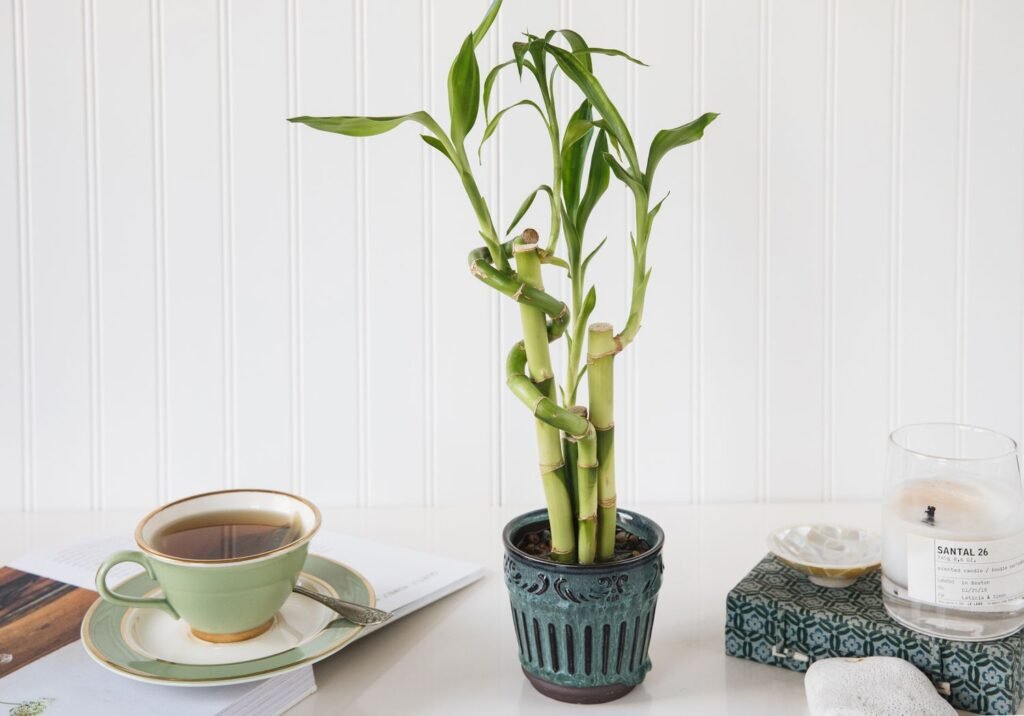
Symbolism and Tradition:
Also known as the “friendship tree” or “money plant,” jade plants are believed to bring wealth and prosperity, especially when placed in strategic locations. Rounded, coin-shaped leaves symbolize financial growth.
Care Tips:
- A succulent that thrives in bright, indirect light.
- Water sparingly; overwatering can cause root rot.
- Can be propagated easily from leaves or cuttings.
Placement Tips:
- Place near the main entrance or wealth corner of a home.
- Avoid clutter around the plant to allow positive energy to circulate.
Jade plants are hardy, low-maintenance, and ideal for beginners seeking both beauty and symbolism.
4. Peace Lily (Spathiphyllum)
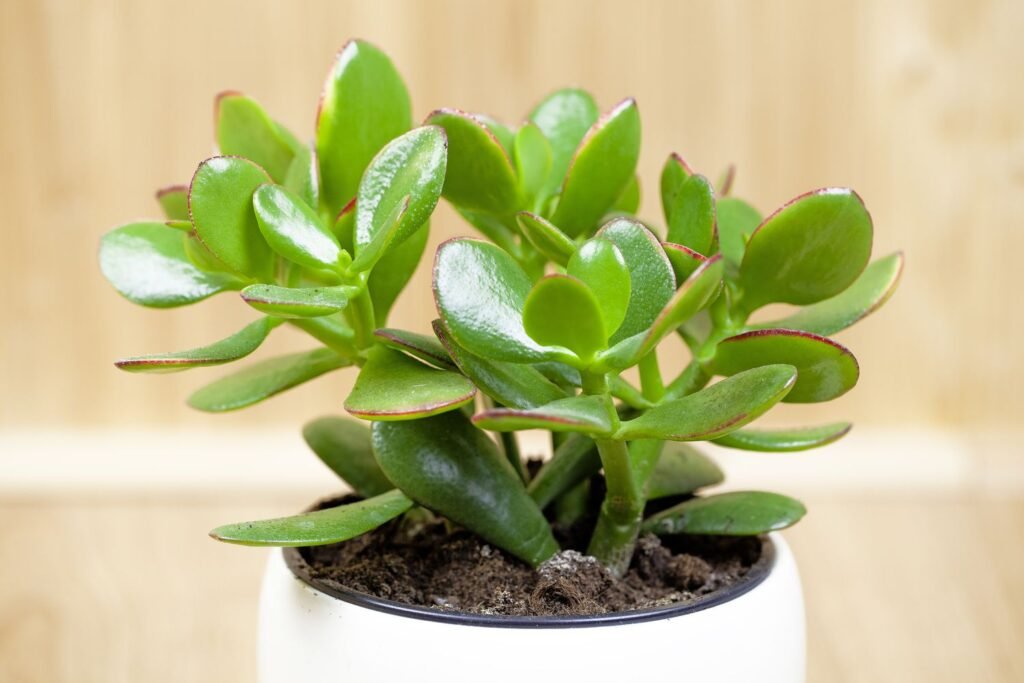
Symbolism and Tradition:
The peace lily represents purity, harmony, and peace. Traditionally, it is believed to protect the home from negative energy while promoting balance and positive vibrations.
Care Tips:
- Thrives in low to medium indirect light.
- Keep soil consistently moist but not waterlogged.
- Remove yellow or dead leaves to maintain plant health.
Placement Tips:
- Place in the living room or entryway to welcome positive energy.
- Avoid placing in dark corners; light exposure enhances vitality.
Beyond symbolism, peace lilies are excellent natural air purifiers, removing harmful toxins from indoor air.
5. Snake Plant (Sansevieria trifasciata)
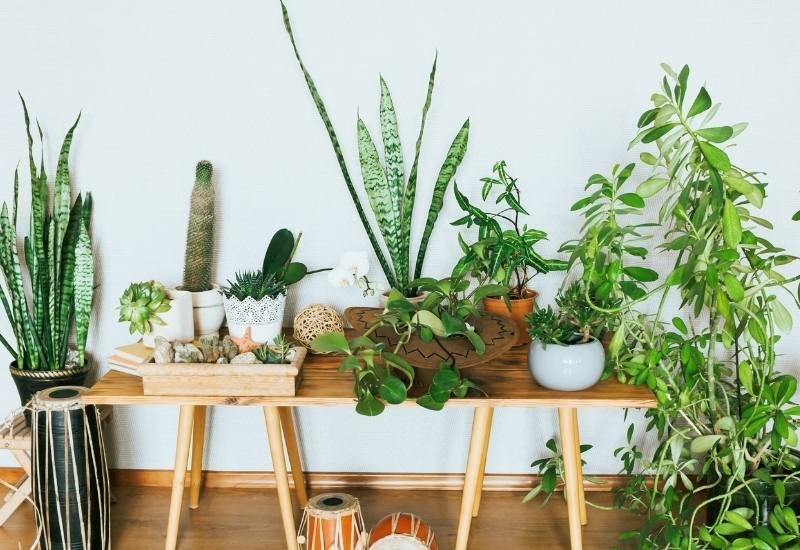
Symbolism and Tradition:
The snake plant, also known as mother-in-law’s tongue, is believed to protect homes from negative energy and promote good fortune. Its upright leaves symbolize strength, resilience, and prosperity.
Care Tips:
- Extremely hardy and tolerant of low light.
- Water sparingly; allow soil to dry between waterings.
- Can thrive in pots or containers, indoors or outdoors.
Placement Tips:
- Place near the entrance to block negative energy.
- Avoid clutter around the plant to maximize energy flow.
Snake plants are low-maintenance, ideal for busy households, and their tall structure makes them visually striking.
6. Areca Palm (Dypsis lutescens)
Symbolism and Tradition:
The Areca palm is often associated with prosperity, vitality, and positive energy in traditional cultures. Its feathery, vibrant fronds bring calm and rejuvenation to living spaces.
Care Tips:
- Prefers bright, indirect light.
- Water regularly but avoid waterlogging.
- Fertilize occasionally with a balanced, organic fertilizer.
Placement Tips:
- Place in living rooms, offices, or bedrooms to enhance air quality and energy.
- Avoid dark, confined spaces where growth may be stunted.
The Areca palm is both aesthetic and symbolic, improving indoor environments aesthetically and energetically.
7. Pothos (Epipremnum aureum)
Symbolism and Tradition:
Pothos is known as a “money plant” in many cultures, symbolizing wealth, prosperity, and positive energy. Its trailing vines represent abundance and continuity.
Care Tips:
- Thrives in low to bright indirect light.
- Water moderately; avoid letting soil dry out completely.
- Can be grown in soil or water, making it versatile.
Placement Tips:
- Hang in kitchen, living room, or near windows to encourage positive energy.
- Avoid placing directly on the floor; elevated positions allow better energy flow.
Pothos is extremely resilient and fast-growing, making it an ideal plant for beginners and busy individuals.
8. Combining Plants for Maximum Positive Energy
To maximize luck and prosperity, consider grouping these plants strategically in your home:
- Wealth Corner (Southeast): Money tree, jade plant, pothos.
- Health and Vitality (East): Areca palm, peace lily.
- Protection and Strength (North or Entrance): Snake plant, lucky bamboo.
Placing plants in areas that receive good natural light and keeping them healthy will enhance their symbolic power.
9. General Care Tips to Maintain Positive Energy
- Keep Plants Healthy: Wilting or dying plants are believed to attract negative energy.
- Clean Leaves Regularly: Dust-free leaves allow plants to absorb light and energy effectively.
- Water Mindfully: Overwatering or underwatering can stress plants and reduce their vibrancy.
- Repot When Needed: Provide sufficient space for roots to grow.
- Avoid Clutter Around Plants: Energy should circulate freely around your indoor greenery.
Healthy, well-cared-for plants not only thrive physically but also maintain their traditional symbolic properties.
10. Conclusion: Harnessing the Power of Indoor Plants for Luck
Indoor plants are more than decorative items; they are living symbols of prosperity, protection, and positivity. By selecting and nurturing plants such as lucky bamboo, money tree, jade plant, peace lily, snake plant, Areca palm, and pothos, you can invite good fortune, happiness, and balance into your home.
Combining traditional wisdom with proper plant care ensures that your indoor garden is both beautiful and energetically beneficial. Whether you want to enhance wealth, health, or protection, these plants offer a practical and symbolic way to improve your living environment.
By cultivating these lucky indoor plants, you are not only enriching your space visually but also aligning your home with centuries of tradition and positive energy, creating a welcoming and harmonious environment for family and guests alike.
